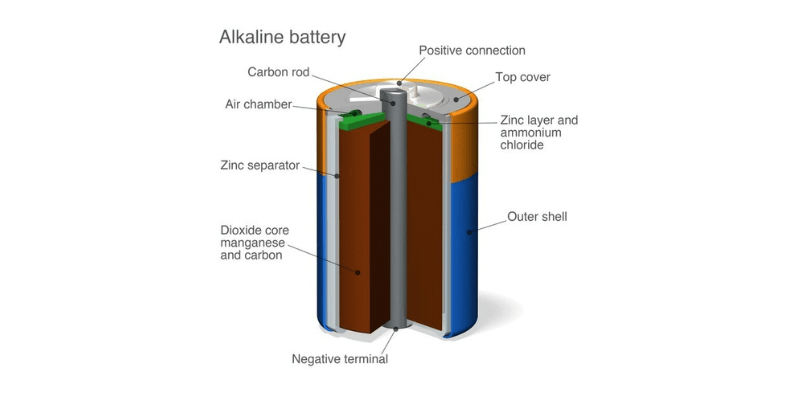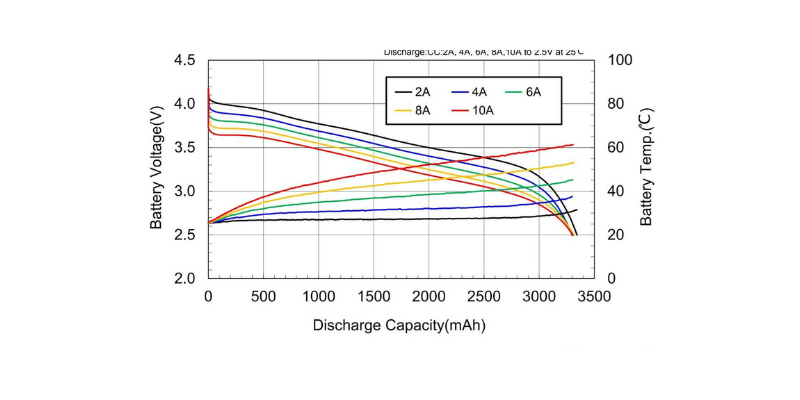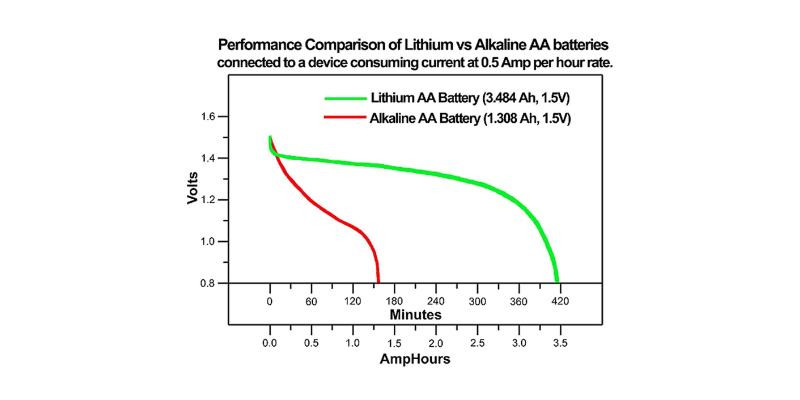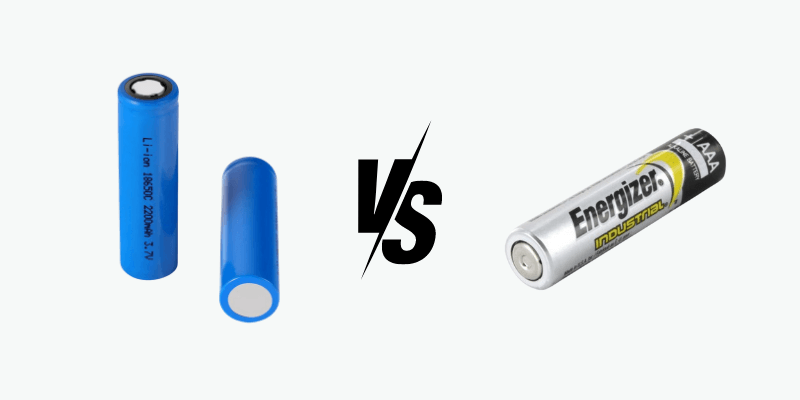Литиевые и щелочные батареи обычно используются в бытовых устройствах и высокопроизводительной электронике. В этой статье рассматриваются их ключевые различия, такие как химический состав, производительность, срок службы и воздействие на окружающую среду. Понимание этих различий поможет вам выбрать лучший тип батареи с точки зрения эффективности и надежности.
Химия
Есть шесть типов литиевых батарей: LFP, LCO, LMO, NMC, NCA и LTO.
По форме они подразделяются на призматические и цилиндрические ячейкии по материалу в тройные литий-ионные и литий-железо-фосфатные батареи.
Запасенная энергия зависит от мощности; например, ячейка LFP 32650 емкостью 4000 мАч удерживает в два раза больше энергии, чем ячейка 18650 NCM емкостью 2000 мАч.
Щелочные батареи основаны на диоксиде цинка и марганца. При прохождении тока цинк окисляется на аноде, а диоксид марганца восстанавливается на катоде.

Производительность
Плотность энергии
Литиевые батареи обычно имеют более высокий плотность энергии (более 200 Втч/кг), что позволяет им хранить больше энергии в меньшем пространстве. Это делает их идеальными для устройств, требующих длительного времени работы или компактных конструкций, таких как смартфоны, ноутбуки и электромобили.
Щелочные батареи с их более низкой плотностью энергии (80–100 Втч/кг) лучше подходят для устройств с умеренным энергопотреблением, таких как фонарики, пульты дистанционного управления и игрушки.
Скорость саморазряда
Литиевые батареи имеют более низкую скорость саморазряда, что позволяет им дольше сохранять заряд, когда они не используются. Это особенно полезно для устройств, хранящихся в течение длительного времени.
Напротив, щелочные батареи имеют более высокую скорость саморазряда, что приводит к их потере заряда со временем, даже если они не используются.
Скорость разряда
Литиевые батареи поддерживают более высокую скорость разряда, обеспечивая быструю подачу энергии. Это крайне важно для приложений, требующих внезапных всплесков энергии, таких как электроинструменты или камеры.
Щелочные батареи имеют более низкую максимальную скорость разряда, что делает их непригодными для сильноточных применений.

Диапазон рабочих температур
Литиевые батареи эффективно работают в более широком диапазоне температур, что делает их идеальными для устройств, используемых на открытом воздухе или в экстремальных условиях.
Щелочные батареи имеют ограниченный диапазон рабочих температур, что влияет на их работу в экстремальных условиях.
Напряжение
Литий-ионные батареи обычно имеют номинальное напряжение 3,7 В, хотя фактическое напряжение может незначительно отличаться в зависимости от типа (например, LFP, LCO, NMC).
Щелочные батареи имеют номинальное напряжение 1,5 В, которое остается постоянным во время разрядки.
Продолжительность жизни
Литиевые батареи служат в восемь раз дольше, чем щелочные.
Щелочные батареи могут прослужить 0,5–1 год, тогда как высококачественные литиевые батареи могут прослужить 4–8 лет.

Цена
Обычно литий-ионные батареи стоят дороже, чем щелочные.
Например, перезаряжаемая литий-ионная батарея типа АА стоит от 5 до 10 долларов за элемент, а щелочные батареи типа АА — от 0,50 до 1 доллара за штуку.
Однако литий-ионные аккумуляторы имеют более длительный срок службы.
Воздействие на окружающую среду
Литий-ионные батареи более экологичны, чем щелочные, поскольку они перезаряжаемые, что позволяет сократить количество отходов и потребление ресурсов.
Хотя для их производства требуется больше ресурсов, их долговечность в течение сотен циклов зарядки означает, что требуется меньше батарей, что снижает воздействие на окружающую среду.
Напротив, щелочные батареи одноразовые и создают более опасные отходы.
Заключение
В заключение, литиевые и щелочные батареи обладают уникальными характеристиками, которые делают их пригодными для различных применений.
Литиевые батареи обеспечивают более высокую плотность энергии, меньшую скорость саморазряда и лучшую производительность в экстремальных условиях, что делает их идеальными для устройств с высоким спросом, таких как смартфоны и электромобили. С другой стороны, щелочные батареи лучше использовать при умеренном потреблении энергии и обычно используются в таких устройствах, как фонарики и игрушки.
Понимание химического состава, производительности, срока службы и воздействия этих батарей на окружающую среду может помочь вам принять обоснованные решения при выборе лучшего типа батареи для ваших нужд.

